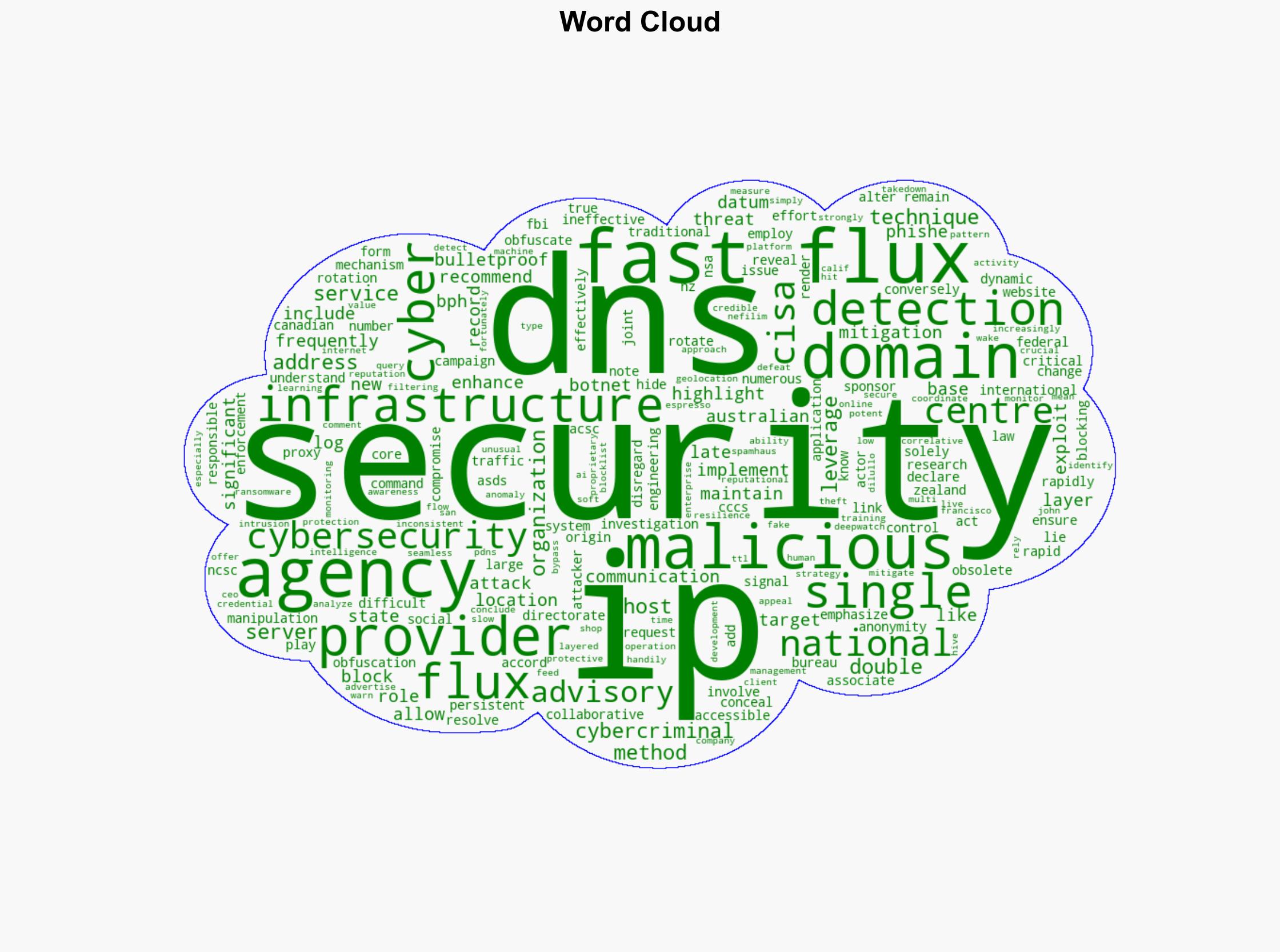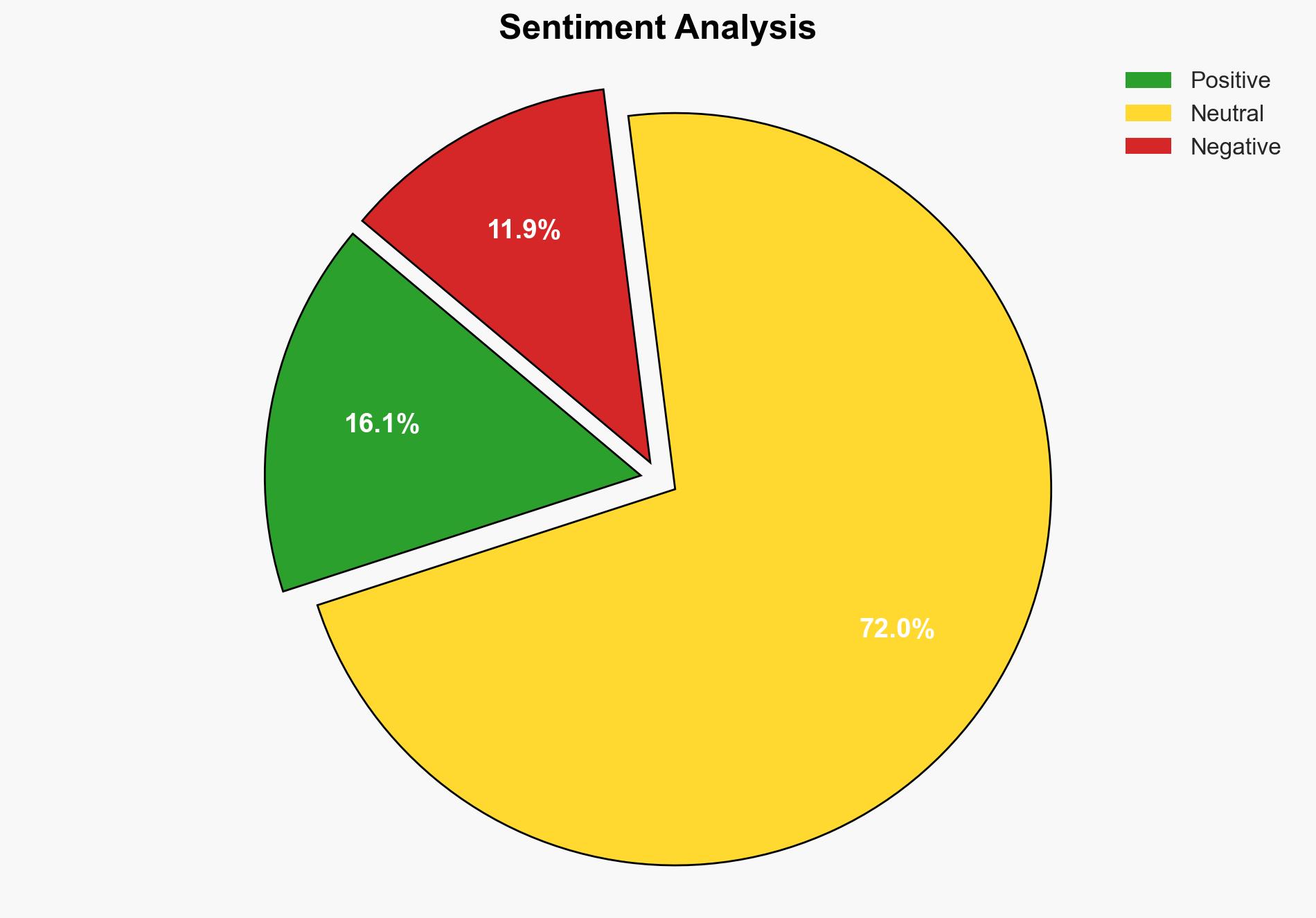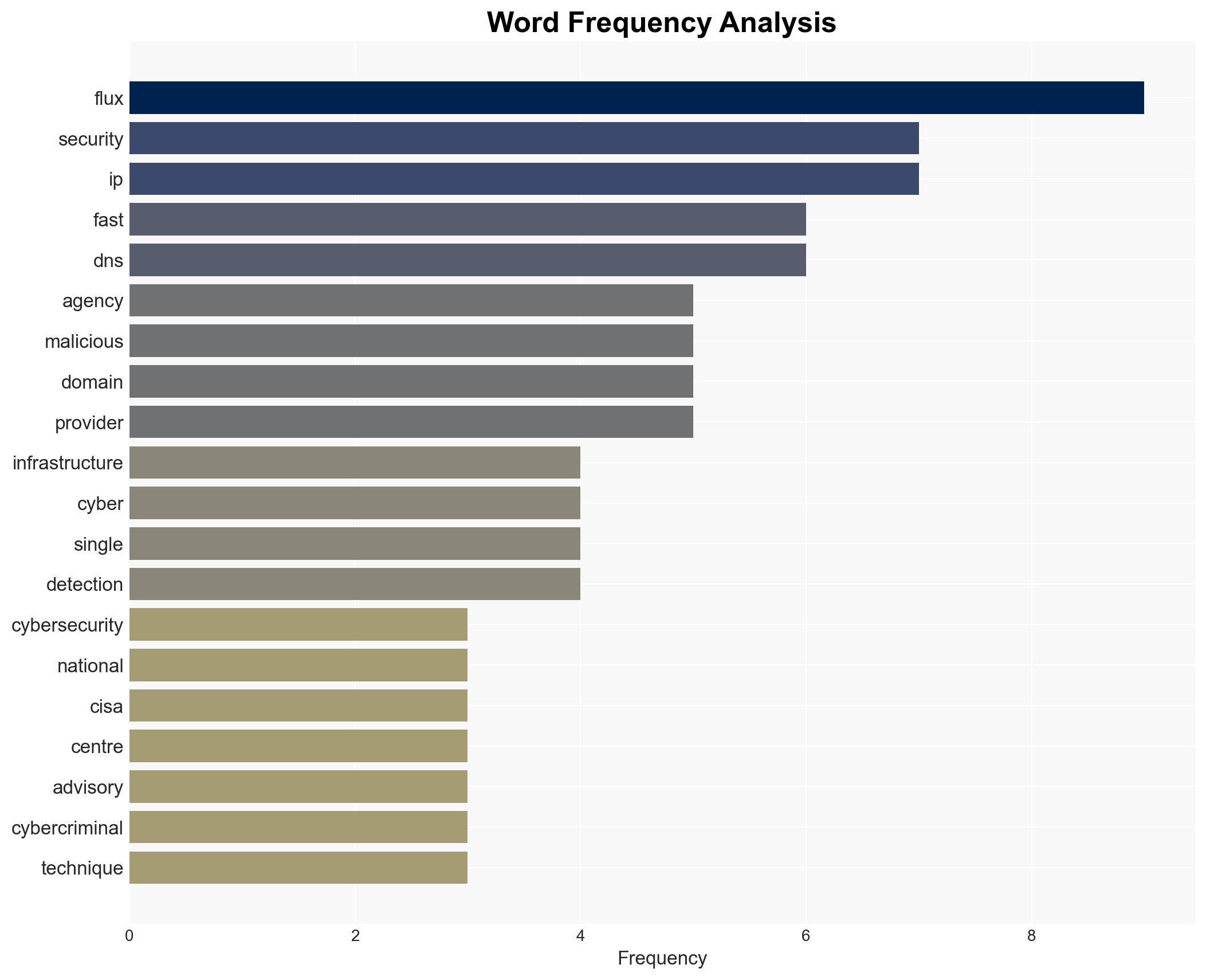NSA and Global Allies Declare Fast Flux a National Security Threat – HackRead
Published on: 2025-04-04
Intelligence Report: NSA and Global Allies Declare Fast Flux a National Security Threat – HackRead
1. BLUF (Bottom Line Up Front)
The NSA, in collaboration with global cybersecurity agencies, has identified the fast flux technique as a significant national security threat. This technique, used by cybercriminals and state-sponsored actors, involves the rapid alteration of DNS records to obfuscate the location of malicious servers, rendering traditional IP-based blocking methods ineffective. The joint advisory emphasizes the need for a multi-layered approach to detect and mitigate fast flux attacks.
2. Detailed Analysis
The following structured analytic techniques have been applied for this analysis:
General Analysis
Fast flux involves dynamic manipulation of DNS records, rapidly altering IP addresses associated with a single domain. This technique effectively conceals the true location of malicious servers, complicating efforts to block or take down these entities. Cybercriminals employ single flux and double flux methods to enhance obfuscation and maintain persistent command and control infrastructures. The use of botnets as proxies further complicates detection and mitigation efforts.
3. Implications and Strategic Risks
The fast flux technique poses significant risks to national security by enabling cybercriminals to conduct phishing campaigns, manage botnets, and facilitate credential theft. The obfuscation capabilities of fast flux make it difficult for law enforcement to track and dismantle malicious operations. This threat has the potential to destabilize regional cybersecurity frameworks and impact economic interests by undermining trust in digital infrastructures.
4. Recommendations and Outlook
Recommendations:
- Implement multi-layered detection and mitigation strategies, including threat intelligence feeds and anomaly detection in DNS query logs.
- Enhance monitoring of DNS records and TTL values to identify unusual patterns.
- Strengthen partnerships with internet service providers and cybersecurity providers to implement protective DNS measures.
- Increase phishing awareness training within organizations to reduce vulnerability to social engineering attacks.
Outlook:
In the best-case scenario, coordinated efforts between government agencies and private sectors will lead to improved detection and mitigation of fast flux attacks. In the worst-case scenario, the continued evolution of fast flux techniques could outpace current defensive measures, leading to increased cyber threats. The most likely outcome involves gradual improvements in detection capabilities, with ongoing challenges in keeping pace with sophisticated cybercriminal tactics.
5. Key Individuals and Entities
The report mentions significant individuals such as John Dilullo and organizations including the NSA, CISA, FBI, Australian Signal Directorate, Canadian Centre for Cyber Security, and New Zealand National Cyber Security Centre. These entities are pivotal in addressing the fast flux threat and enhancing global cybersecurity resilience.





